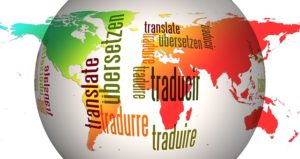One of the questions frequently asked by international sellers wanting to sell overseas is whether to translate their website for overseas customers, or to what extent they should localise their site.
 My first thought in answering that question – and I imagine this is a thought shared by many customers – is that I wouldn’t considering buying something online unless I could do it from a website that was in my language. Not only would I not feel entirely comfortable using a site that wasn’t in my language, but it would probably be quite difficult for me to actually navigate in the first place.
My first thought in answering that question – and I imagine this is a thought shared by many customers – is that I wouldn’t considering buying something online unless I could do it from a website that was in my language. Not only would I not feel entirely comfortable using a site that wasn’t in my language, but it would probably be quite difficult for me to actually navigate in the first place.
Providing customers with a version of your website in their own language instantly makes them feel more comfortable; you’re giving them an environment that is more conducive to them parting with their money.
A study was carried out in 2011 by the European Commission (Flash Eurobarometer, Flash EB Series #313), showing that half of online users in the EU would not contemplate using an English version of a website if there wasn’t a version in their own language. So by not making some kind of provision for international visitors to your website, you may be losing out on extra business – making your website available in other languages could really increase your traffic.
Another finding from the report was that 90% of EU internet users said when given a choice of languages, they always visited a website in their own language. So when your business is up against others that do have websites in the local language, you’re potentially missing out on 90% of the market, which straightaway disadvantages you compared to your competitors.
Aside from the stats, it’s just a more professional look to have your website available in a variety of languages, and makes the consumer feel that you’re the real deal.
So if you are thinking about localising your website, just how far should you go? Should you fully makeover your website for different territories or simply translate the keywords?
Well, completely revamping and translating websites is an expensive business, so maybe start by offering a version of your website in one extra language to start with, and see how that impacts on your traffic and sales.
Of course, if you’re offering a website in a certain language, make sure you can support customers in that country – for example, a French site isn’t much good without being able to pick up calls or emails in French too. When localising your site, remember that there’s more to it than simply translating it. Be mindful of any local nuances and cultural differences, and aware of anything that might cause offence.
Though there will be a cost associated with localising your site, one way of saving money is by using World First to repatriate your profits from international sales. We take a smaller margin than the banks, so more of your money makes it home – which is just as it should be. Get in touch with us to find out more. You’ll be glad you did.


